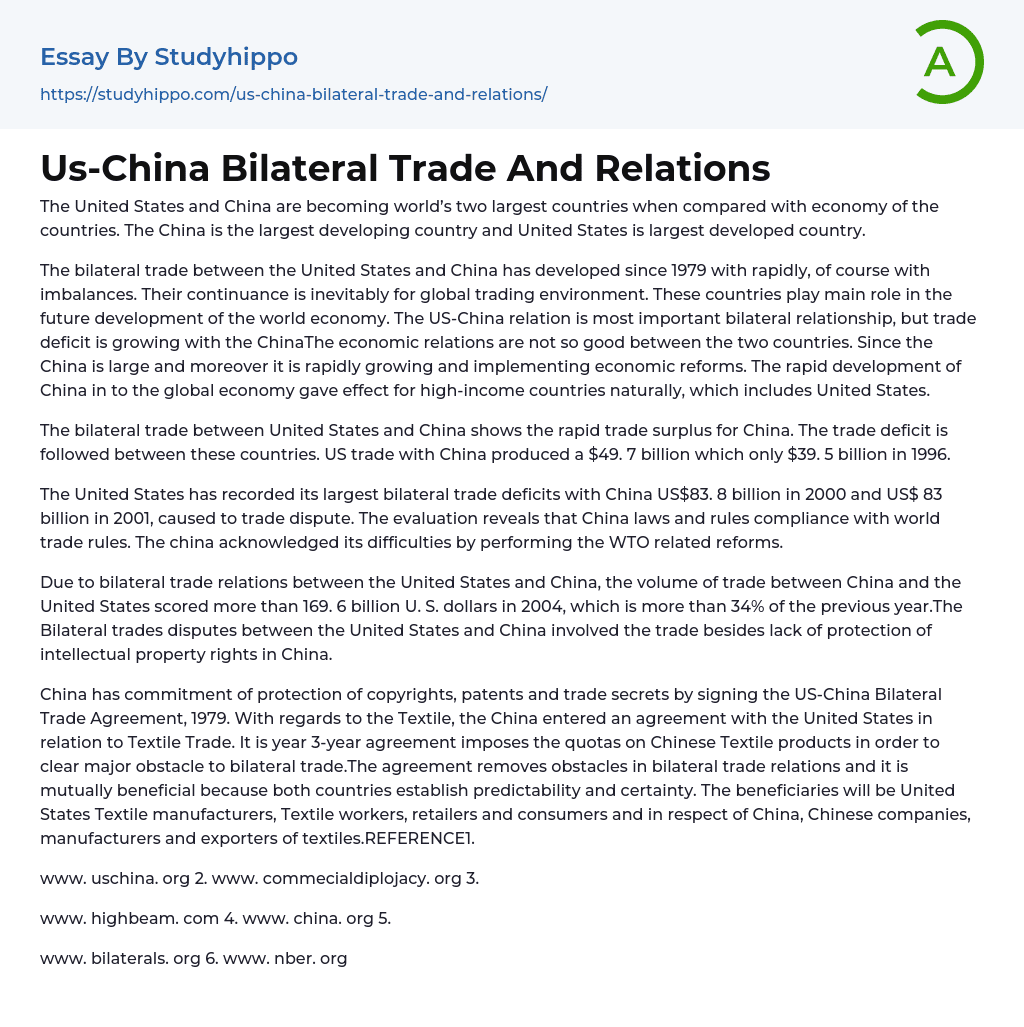China and the United States occupy prominent positions in the world economy. China is the largest developing nation, while the United States is the largest developed country.
Trade imbalances have existed between the US and China since 1979, as is typical in global trade. Nonetheless, their partnership is crucial given their respective roles in shaping the world economy. Though the growing trade deficit raises concerns, the economic relationship between these two nations remains significant albeit imperfect. The United States has reaped benefits from China's swift expansion and adoption of economic policies.
The United States' trade deficit has grown due to a significant increase in China's trade surplus. Since 1996, the trade imbalance between both countries has risen from $39.5 billion to $49.7 billion.
China caused the United States to have its largest trade deficits between 2000 and 2001, with amoun
...ts of US$83.8 billion and US$83 billion respectively. It was found that during this period, China did not fully comply with global trading policies and regulations. However, they have since made an attempt to implement reforms in line with the World Trade Organization.
The bilateral trade relations between the United States and China led to a growth of more than 34% in their trade volume, exceeding $169.6 billion in 2004. However, disputes and inadequate protection of intellectual property rights in China significantly affected this commerce.
As part of the US-China Bilateral Trade Agreement in 1979, China agreed to safeguard copyrights, patents, and trade secrets. Additionally, a Textile Trade agreement was implemented which imposed quotas on Chinese textile products for three years. This agreement aimed to enhance bilateral trade by ensuring predictability and certainty for both countries. The benefits of thi
agreement will extend to United States' textile manufacturers, workers, retailers, consumers as well as Chinese companies that are involved in manufacturing and exporting textiles. REFERENCE1.
Here are a couple of hyperlinks:
The websites www.highbeam.com and www.china.org are listed as 4 and 5, respectively. The and their contents remain unchanged.
Visit www.bilaterals.org and www.nber.org.
- Bangladesh essays
- China essays
- Hong Kong essays
- India essays
- Japan essays
- Kuala Lumpur essays
- Malaysia essays
- Manila essays
- Pakistan essays
- Philippines essays
- Singapore essays
- Vietnam essays
- Vietnamese essays
- American Dream essays
- Barriers To Entry essays
- Capitalism essays
- Central Bank essays
- Compensation essays
- Consumerism essays
- Economic Development essays
- Economic Growth essays
- Economic Inequality essays
- Economic System essays
- Economy essays
- Employment essays
- Export essays
- Finance essays
- Free Trade essays
- Gross Domestic Product essays
- Human Development essays
- Income Inequality essays
- Industry essays
- Inflation essays
- International Business essays
- International Trade essays
- Macroeconomics essays
- Materialism essays
- Max Weber essays
- Microeconomics essays
- Minimum Wage essays
- Monetary Policy essays
- Monopoly essays
- Pricing essays
- Profit essays
- Recession essays
- resources essays
- Taxation essays
- Trade essays
- Unemployment essays
- Warehouse essays




